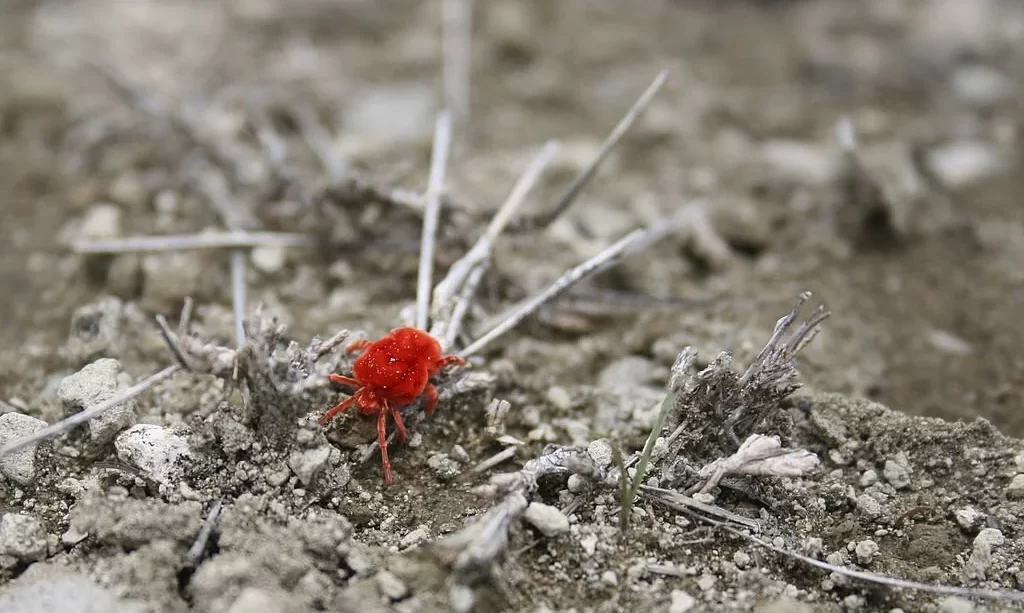In the intricate world of agriculture and horticulture, a tiny but notorious pest often takes center stage: the spider mite. These minuscule arachnids are infamous for their ability to wreak havoc on a wide range of plants, leaving behind a trail of damage. However, as gardeners and plant enthusiasts seek to understand and combat these pests, a question frequently arises: Do spider mites live in the soil? To unravel the mysteries of these plant-infesting creatures, we embark on a journey into the habits and habitats of spider mites. Are they subterranean dwellers, or does their domain lie elsewhere? Let’s explore the fascinating world of spider mites to uncover the truth.
- Works on: Bulb Mites, Fungas Gnats, Root Aphids, Western Flower Thrips, and soil organismsm like Springtails
- 12,500 Adult Predatory Mites.
- Release Rates: 12.5K per 500 sq. ft. or 30 per sq. ft.
Spider Mites
Before we delve into their habitat, let’s familiarize ourselves with the tiny but troublesome inhabitants known as spider mites:
- Diminutive Arachnids: Spider mites belong to the arachnid class and are part of the Tetranychidae family. Despite their arachnid lineage, they are not spiders but are closely related to them.
- Lilliputian Stature: These creatures are exceptionally small, typically measuring less than 1 millimeter in length. Their diminutive size makes them challenging to detect with the naked eye.
- Variety of Colors: Spider mites come in a range of colors, with some of the most common being red, green, and brown. Their coloration can change depending on their age and environmental conditions.
- Web-Spinning Proclivity: One distinctive trait of spider mites is their propensity to spin fine webs. These delicate silk threads are a hallmark of spider mite infestations and contribute to their destructive impact on plants.
The Primary Habitat of Spider Mites
As we explore the world of spider mites, it becomes evident that their primary habitat is not in the soil but rather on the above-ground parts of plants:
- Above-Ground Dwellers: Spider mites primarily inhabit the leaves, stems, and other aerial portions of plants. They are sap-sucking pests that feed on plant cells by piercing the plant tissue and extracting fluids.
- Damage Above, Not Below: The damage caused by spider mites, including stippling, discoloration, and overall plant stress, is most pronounced on the above-ground plant parts. This is where they feed and reproduce, causing visible harm.
- Aerial Weavers: Spider mites are best known for their web-spinning behavior on the plant’s surface. These webs serve various functions, including protection, shelter, and means of transportation between leaves.
As we debunk the myth of spider mites residing in the soil, it becomes clear that their true domain lies above ground, where they pose a significant threat to the health and vitality of plants. In the following paragraphs, we’ll delve further into their behavior and the implications of their aerial habitat, providing valuable insights for gardeners and plant caretakers.
- Natural Insect Control: Arber Organic Liquid Concentrate acts as an effective organic insecticide, providing a safe way to control and repel pests on indoor plants. This powerful liquid solution ensures your plants remain healthy and pest-free
- Boost Plant Health: Our Nutrition & Health Starter Set includes two best-selling products, Plant Food and Bio Protectant, in trial-size 8oz concentrates. Patented, certified organic ingredients boost plant health, increase yield, and improve soil fertility, making it an essential addition to your organic gardening routine
- Sustainable Plant Food: Our proprietary plant food is created by rescuing produce destined for the landfill. This nutrient-dense liquid compost, rich in carbohydrates, amino acids, organic acids, and fats, becomes an ideal form of energy for plants and soil organisms, enhancing overall plant growth and vitality
- Powerful Bio Protectant: Formulated from knotweed, one of the most invasive species, Arber’s Bio Protectant undergoes a complex fermentation and extraction process. This results in a potent formulation that effectively protects plants from diseases and pests, turning an invasive plant into a valuable garden asset
- Safe and Eco-Friendly: Made from natural, certified organic ingredients, this fungicide and insecticide spray is safe for use around children, pets, and beneficial insects. It provides an eco-friendly solution for indoor gardening, suitable for a wide variety of plants including flowers, herbs, and vegetables
Do Spider Mites Live in Soil? The Myth Debunked
Let’s address the common misconception: Do spider mites live in soil? The answer is a resounding no. Spider mites are not soil-dwelling creatures as part of their typical life cycle. Their primary habitat remains on the aerial parts of plants. Here’s why:
- Life Cycle on Plants: The life stages of spider mites, including eggs, nymphs, and adults, all occur on the plant itself. They reproduce and feed exclusively on the plant’s foliage, stems, and other above-ground structures.
- Accidental Falls: While spider mites may occasionally drop to the soil, this typically happens as a result of disturbance or during their dispersal phase. However, their presence in the soil is temporary, and they do not establish a permanent residence in the ground.
Spider Mite Interactions with Soil
It’s worth noting that when spider mites do find themselves on the soil, their behavior differs significantly from that of soil-dwelling organisms:
- Limited Activity: Spider mites do not engage in typical soil-related activities such as feeding on organic matter, participating in soil ecosystems, or interacting with plant roots. Their focus remains primarily on the plant host, where they continue their sap-sucking, plant-damaging behavior.
- Transient Visitors: Spider mites on the soil are transient visitors, and they do not contribute to the soil’s health or ecology. Their stay is often brief, as they seek to return to their preferred habitat—the plant—where they can resume their feeding and reproductive activities.
Conclusion
In conclusion, the myth that spider mites live in soil is unequivocally debunked. These tiny arachnids are aerial inhabitants, primarily residing on the leaves, stems, and other above-ground parts of plants. While they may occasionally descend to the soil due to disturbances or dispersal, their interaction with the soil is limited and transient. Gardeners and plant enthusiasts can focus their efforts on monitoring and managing spider mite infestations on plants’ above-ground structures, as this is where these pests pose the greatest threat. By understanding their true habitat and behavior, we can take effective measures to protect our greenery from the damaging effects of spider mites.





